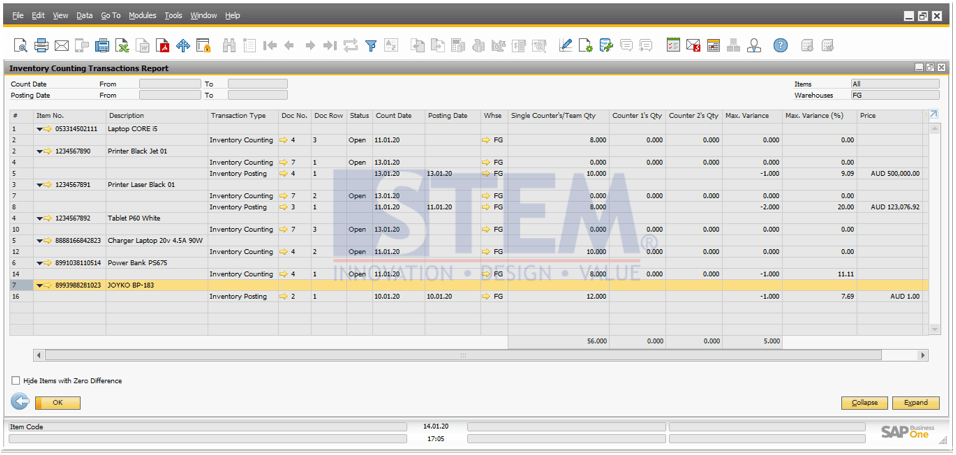SAP Business One X Inventory Calculation Application Stock Count (Import Calculation Results from Stock Count into SAP B1)
Inventory Counting (Stock Taking) is a very important activity for every company to always manage the inventory in the warehouse either perpetually or periodically.
By matching existing inventory with the amount stored in the database, companies can make adjustments to existing inventory records, calculate & check physical stock weekly, monthly or yearly (stock taking / physical inventory), detect differences between existing stock in the system with physical stock, and improve inventory management. With this the company can ensure the accuracy of the results of inventory calculation.
SAP Business One provides inventory counting solutions to meet business needs.
By matching existing inventory with the amount stored in the database, companies can make adjustments to existing inventory records, calculate & check physical stock weekly, monthly or yearly (stock taking / physical inventory), detect differences between existing stock in the system with physical stock, and improve inventory management. With this the company can ensure the accuracy of the results of inventory calculation.
SAP Business One provides inventory counting solutions to meet business needs.
But how do we want to do the calculation and check the physical stock in the Stock Count application?
What is a Stock Count?

Stock Count (Stock Take) is a FREE Android application to help calculate and check physical Stocks. By using an android phone and Barcode Scanner, Stock Count can help to calculate the amount of physical stock quickly, accurately, and efficiently anytime and anywhere.
FREE DOWNLOAD at Google PLAYSTORE: https://play.google.com/store/apps/details?id=com.sterling.stockcount&hl=en
Then how can SAP Business One be able to enter the results of the physical stock calculation from the Stock Count application?
Only by importing calculated items in the Stock Count application into SAP Business One, recording the number of stocks in the Stock Count will be automatically recorded.
Here is how to do Inventory Counting on SAP Business One through the calculation of physical stock (Stock Taking) on the Stock Count application:
1. Prepare Data Master Items for Stock Count:
- Enter list items into the Master Product menu according to the template (how to prepare master product items and templates available in Stock Count Apps)
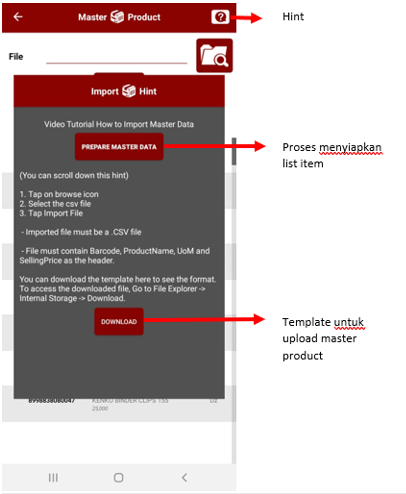
- In the Stock Count application select Master Data menu → Master Product
- Select the search document symbol
- Select the edited file according to the template
- Select the IMPORT FILE button
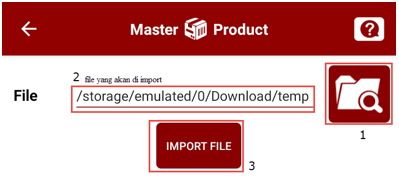 File Imported Successfully
File Imported Successfully
2. Stock calculation process in Stock Count
- In the Stock Count application select the Start Counting menu
- Enter the name that performs the stock calculation
- Enter Warehouse Location (According to the Warehouse Code on SAP)
- Have the OK button
- Enter the amount of stock (can use a scanner / manual input by typing the barcode number)
3. Stock calculation results on Stock Count
- In Stock Count Apps select the View Result menu
- Select the calculation results
- Press the Share button
- Send stock take results (can be via mail, social media, or share files)
- The result of the Stock Count is a .csv file
- To enter data into SAP Business One, change the file type to .txt (supported txt files are tab-delimited, unicode, or MS-DOS)
4. Inventory Counting Process by using Import Items
- In SAP Business One select the Inventory Transaction -> Inventory Counting Transaction -> Inventory Counting menu
- Enter the Count Date, Counting Type and Inventory information
- Select the Add Item Button
- Select Import Items
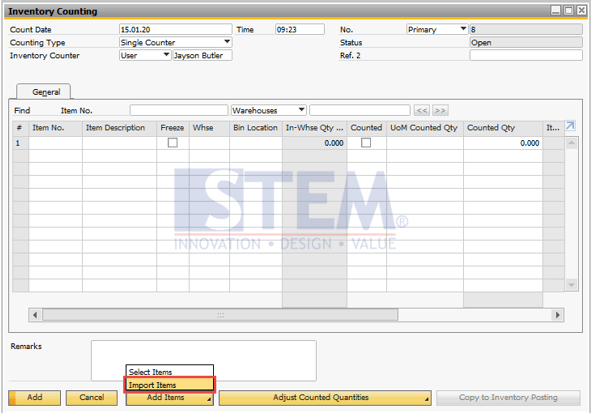
- Import txt file containing the results of the calculation of physical stock from the Stock Count application in the File to Import field
- Determine the required data column mapping based on the file calculation results of physical stock. Txt
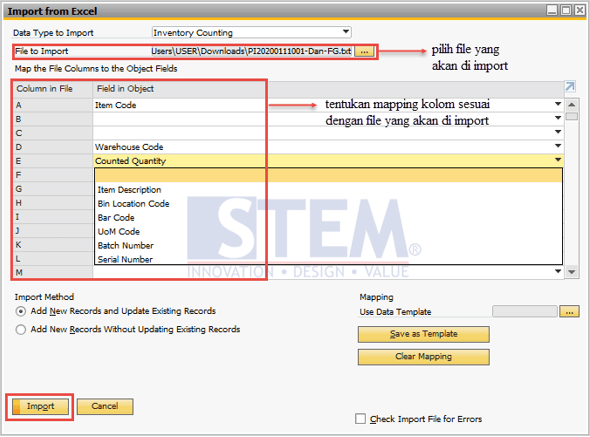
- Select the Import button
- The file was successfully imported and in the Item No, Item Description, Warehouse and Counted Qty columns will automatically be filled in accordance with the imported data.
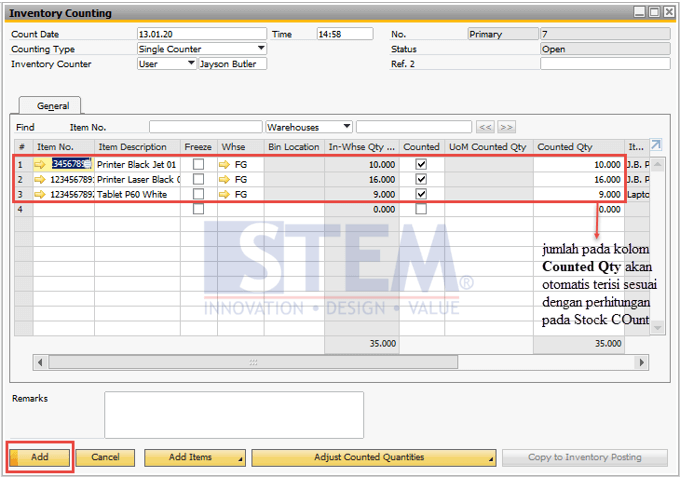
- Select the Add button
5. What to do if the physical stock does not match the stock in the system?
If there is a difference between the amount of stock in the system and the physical amount, the system will make red highlights on the item to indicate that there is a difference in the amount of stock. To correct this we just copy the Inventory Counting document into the Inventory Posting document
- Select the Copy to Post Inventory button
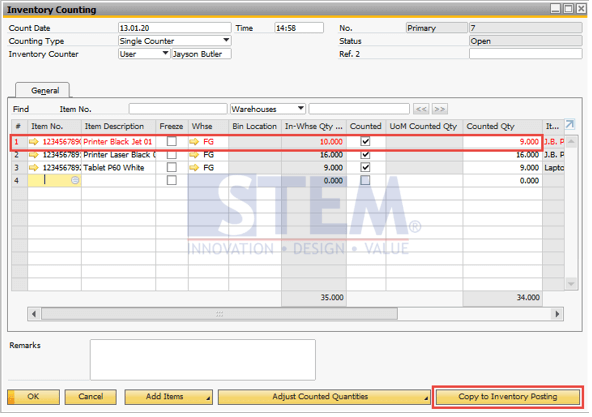
- After that we will enter the Posting Inventory page
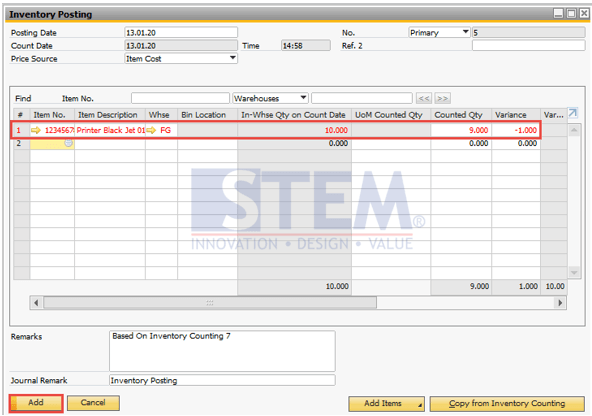
- Click the Add button and the Post Inventory will be successfully performed.
6. Print Inventory Counting documents
- Open the Inventory Counting or Inventory Posting document
- Click the last data record symbol on the tool bar
- On the tools bar, select the Print symbol -> Determine the file type of document to be saved -> Save
- Document printed successfully
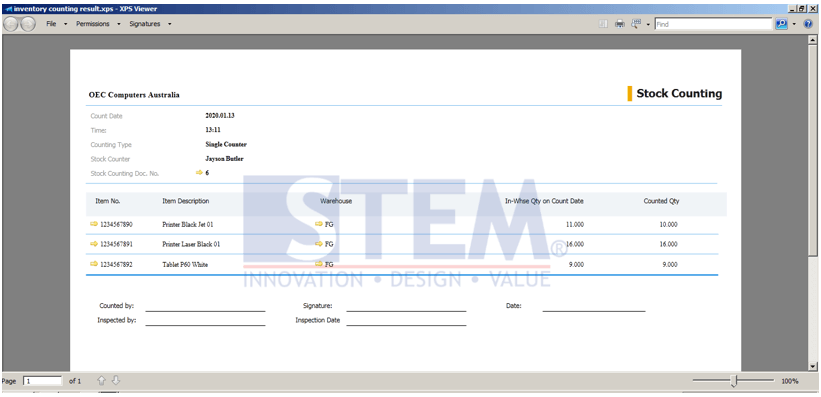
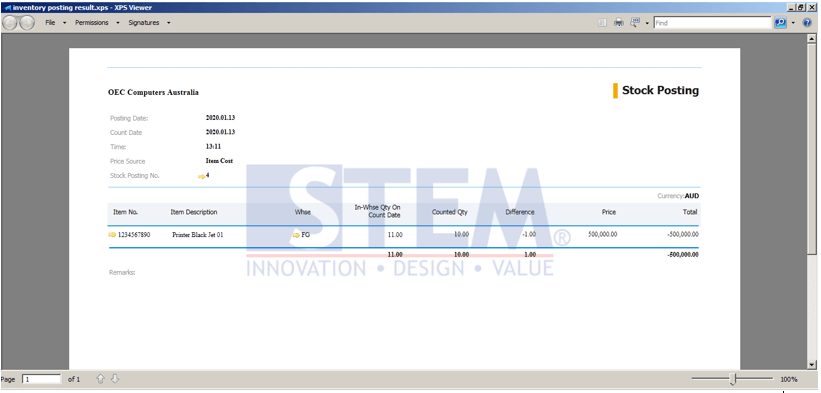
7. See the results of inventory calculations in the Inventory Counting Transaction Report
- In SAP Business One select the Inventory menu -> Inventory Report -> Inventory Counting Transaction Report
- Filter reports based on a predetermined warehouse
- An inventory calculation report has appeared
